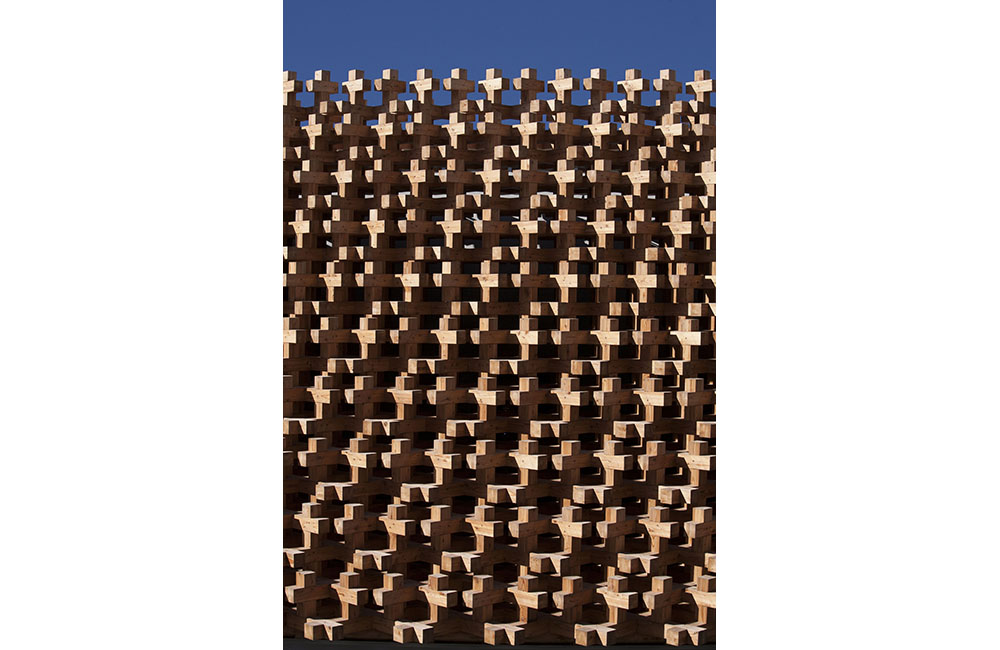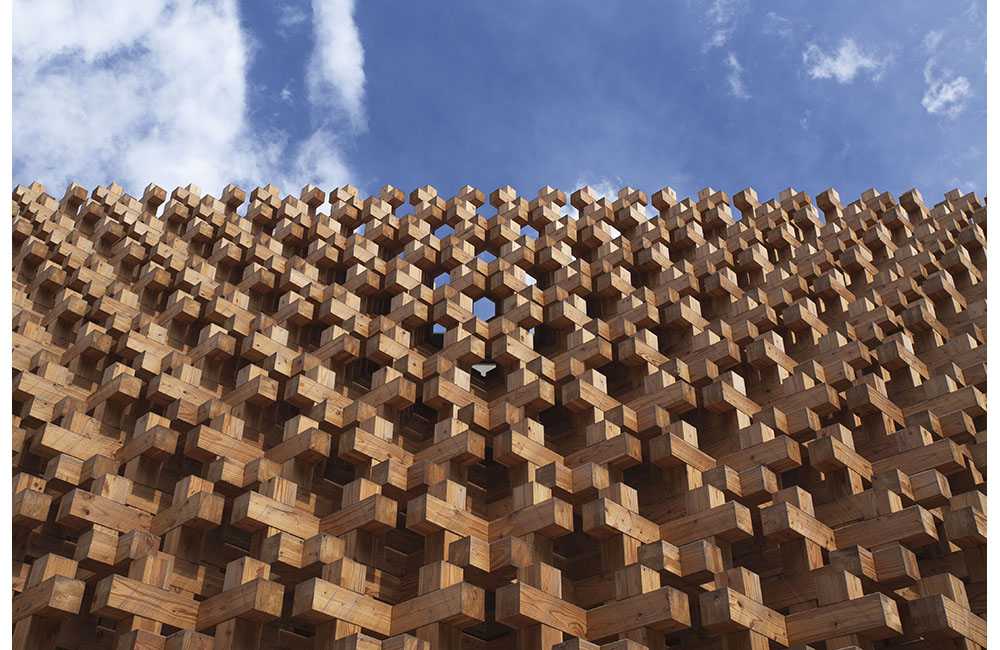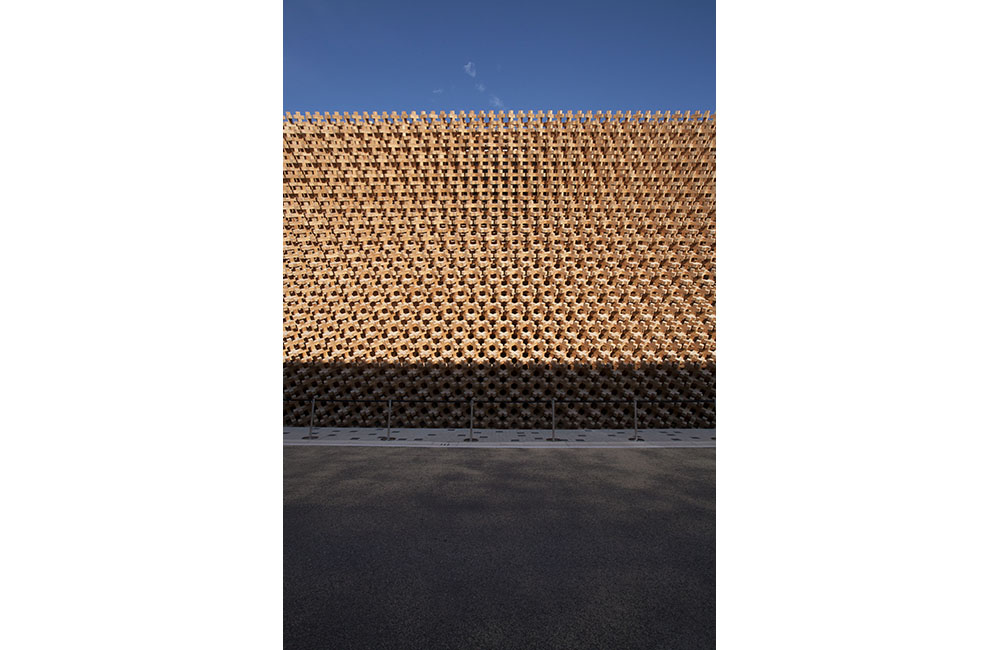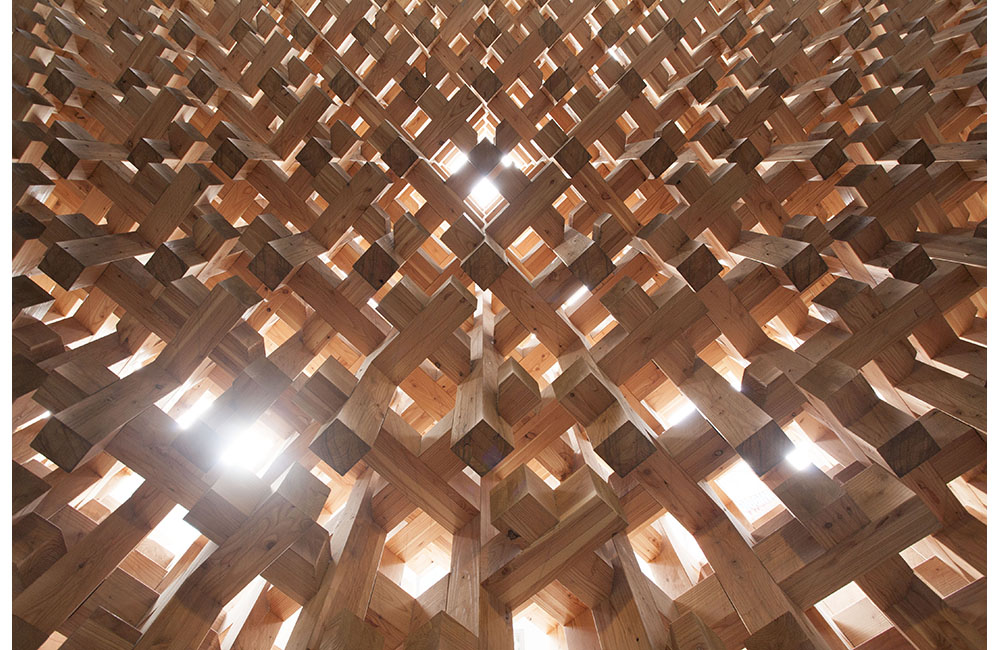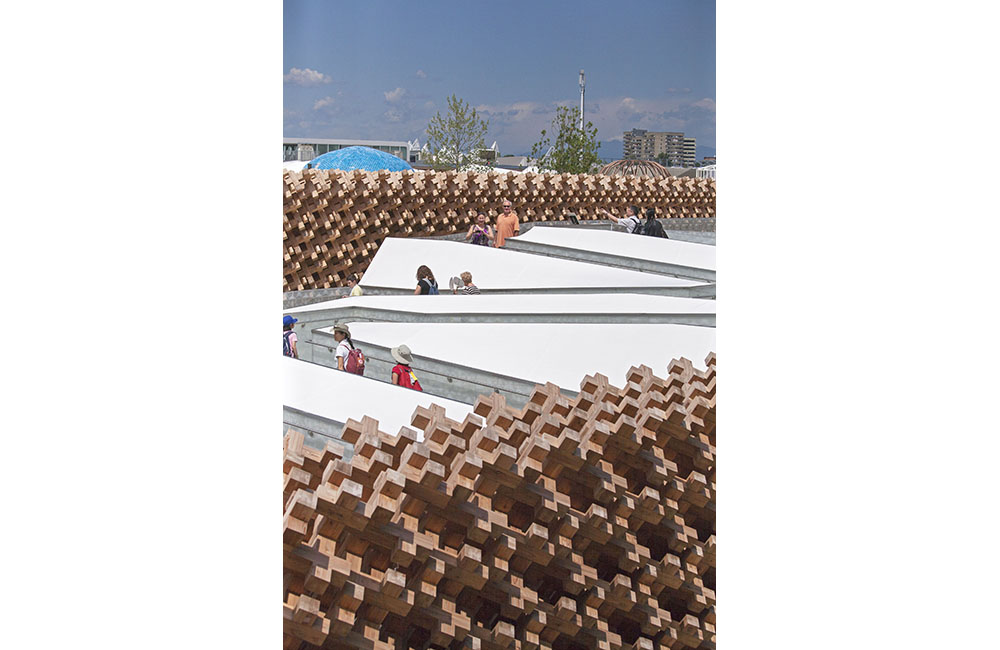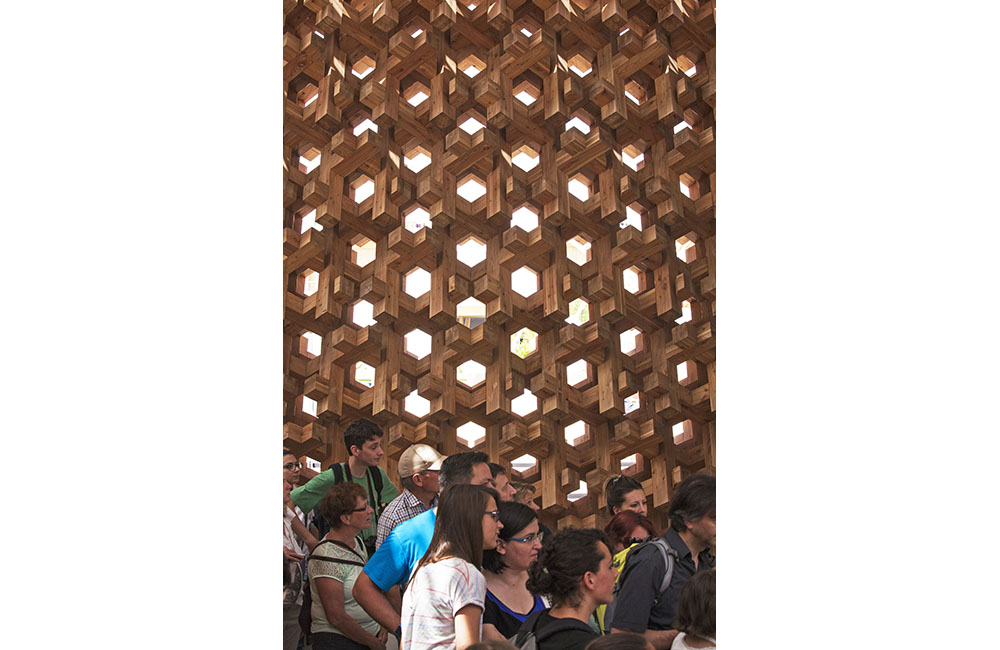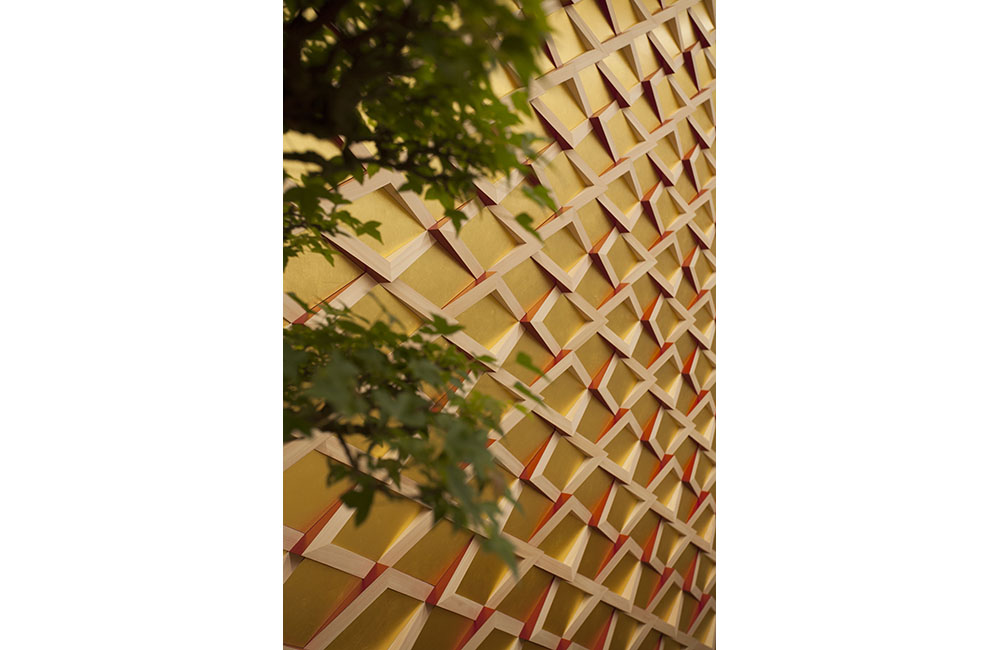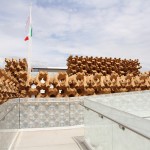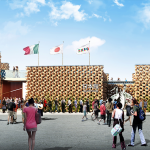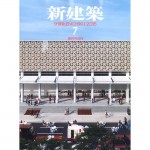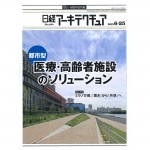ミラノ国際博覧会日本館 / EXPO Milano 2015 JAPAN PAVILION
2015年8月11日
再生可能資源である木材の活用が森林の整備保全につながり、その森林が養分豊富な水を涵養し、その水が大地や海洋に還元され、人々に多様な食材をもたらす。古来日本の里山では、木の活用と人々の暮らしが密接に結びつき、理想的な循環型社会が育まれてきました。日本館では、ミラノ万博のキーワードの一つである「持続可能性(サステナビリティ)」を体現する建築素材として「立体木格子」を採用します。日本の四季・自然・生態系・食など、多様性の原点を表す立体木格子は、「多様性を抱くうつわ」としての日本館を形づくります。
法隆寺に代表される日本の伝統的木材建築は、継手・仕口といった木同士の「めり込み作用」によって成り立つ、粘り強く耐震性にすぐれた構造体であり、「生きている建築(生命論的建築)」と呼べるものです。立体木格子による構造体は、伝統的木造建築の木組みの知恵と、木材の「めり込み作用」の解析・応用という現代技術によって初めて実現する、まさに日本の伝統文化と先端技術の融合による革新的な手法です。
The use of the renewable resource of wood for the pavilion connects it to issues of forest maintenance and protection. Forests promote the creation of water rich in nutrients, which is then returned to the land and the seas, stimulating the creation of the diverse food that people eat. The use of trees and lifestyles of people have been closely connected within satoyama (natural woodlands that coexist with nearby populated areas) in Japan since ancient times. Within these communities, Japan has fostered ideal recycling-oriented societies. The Japan Pavilion will adopt a three-dimensional wooden grid as construction materials that embody “sustainability”, one of the keywords of Expo 2015 Milano. The three-dimensional wooden grid will symbolize the origin of Japan’s diversity – our four seasons, nature, ecosystem and food. The pavilion will take the shape of a “bowl of diversity”.
The traditional wooden construction techniques of Japan – epitomized in Horyuji Temple – use “a compressive strain method” in which pieces of wood are connected together with couplers and joints for support. This results in constructions that are extremely resistant to earthquakes; a kind of building that has sometimes been called “living construction (or life theory construction)”. The pavilion, created from a three-dimensional wooden grid, will be the first ever to use both traditional construction knowledge about wooden frameworks and the modern analysis and application techniques used for “the compressive strain method”. This will result in truly innovative construction that fuses Japan’s traditional culture and advanced technology.
関連リンク
基本データ
- 発注者
- 日本貿易振興機構
- 施工者
- Takenaka Europe GmbH Italy Branch
- 敷地面積
- 4,170㎡
- 建築面積
- 2,376㎡
- 延床面積
- 4,390㎡
- 階数
- 地上2階
- 構造
- S
- 構造設計
- 石本建築事務所(立体木格子壁 Arup東京事務所)
- 設備設計
- 石本建築事務所
- 用途
- 展示館
- 場所
- イタリア共和国ロンバルディア州ミラノ
- 完成年月
- 2015年4月
- その他
- 意匠設計:石本建築事務所 / 建築プロデューサー:北川原温・北川原温建築都市研究所
DATA
- Client
- Japan External Trade Organization
- Constractor
- Takenaka Europe GmbH Italy Branch
- Site area
- 4,170㎡
- Building Area
- 2,376㎡
- Total floor area
- 4,390㎡
- Number of Stories
- 2F
- Structure
- S
- Structure Engineer
- Ishimoto Architectural & Engineering Firm, Inc.( three-dimensional wooden grid engineer: Ove Arup & Partners Japan Ltd. )
- M&E Engineer
- Ishimoto Architectural & Engineering Firm, Inc.
- Main use
- Pavilion
- Location
- Milano, Italy
- Completion Date
- April, 2015.
- Others
- Architectural planning: Ishimoto Architectural & Engineering Firm, Inc. / Design Concept and Architectural design: Atsushi Kitagawara Architects
